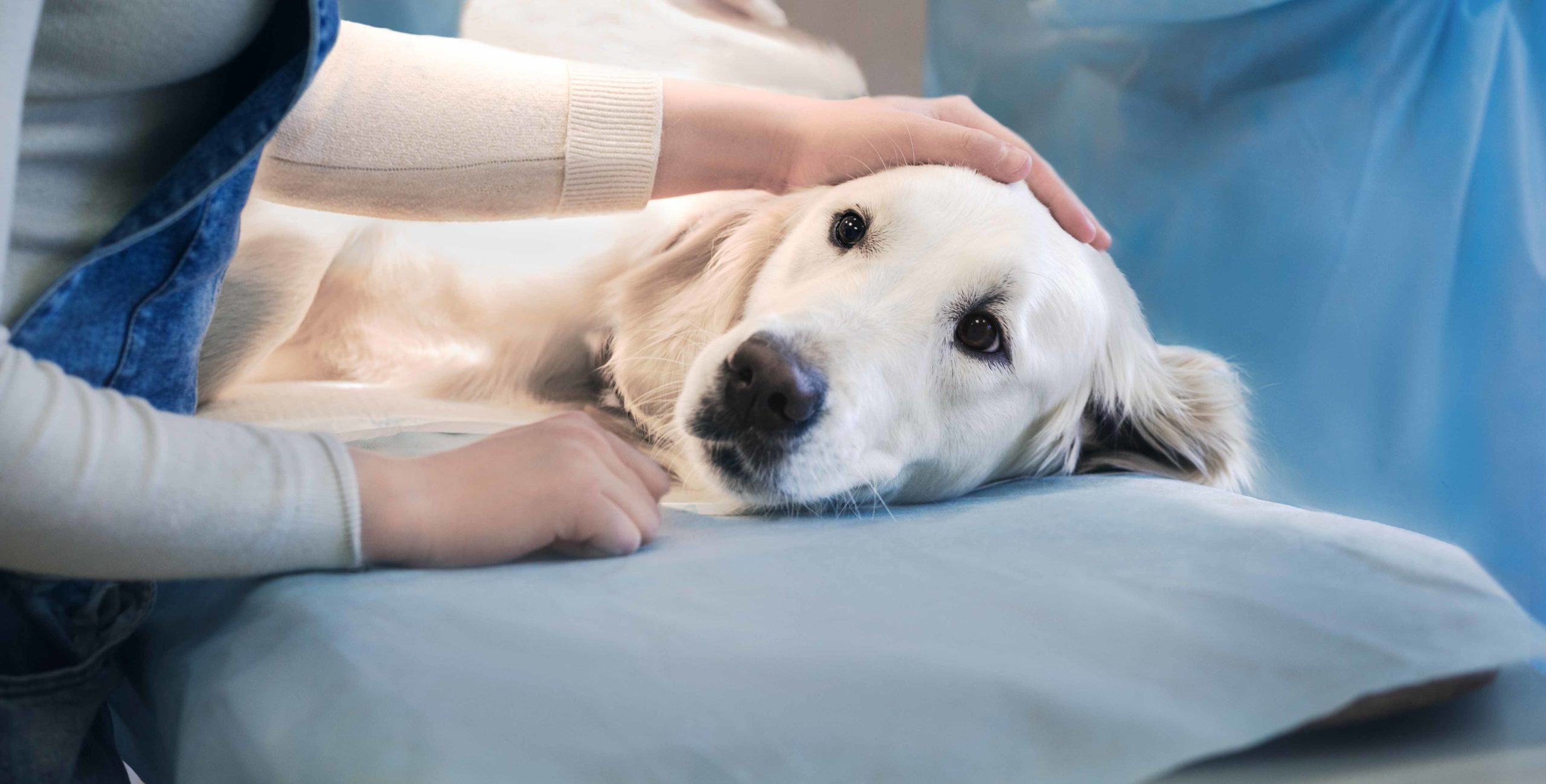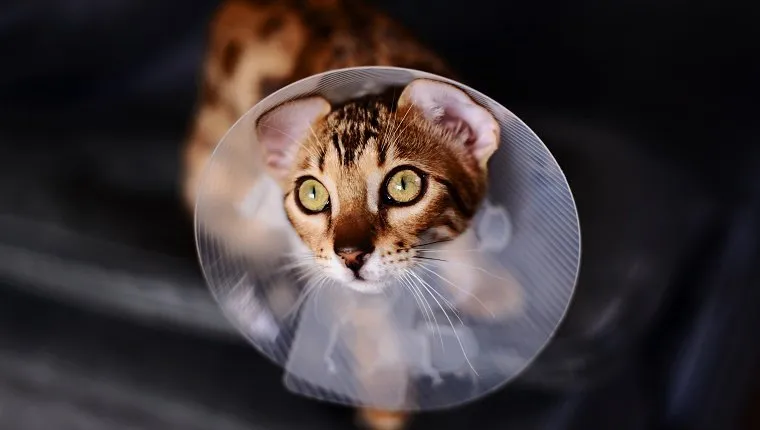Early Beginnings
Origin of Spaying/Neutering Practices

The concept of spaying or neutering animals dates back thousands of years, with evidence suggesting that ancient civilizations practiced some form of sterilization to manage population growth and prevent unwanted breeding.
In ancient China, around 1000 BC, the practice of castration was used on male dogs for hunting purposes, as it allowed them to remain active and aggressive while preventing unwanted mating.
A similar technique was employed by the Greeks and Romans, who practiced a form of spaying or neutering through surgical procedures, although the exact methods used are unclear.
However, it wasn’t until the late 19th century that modern spay/neuter practices began to emerge in the Western world. The development of anesthesia and antisepsis techniques made surgery safer and more effective for both humans and animals.
In the early 20th century, veterinarians began to advocate for spaying or neutering as a means of controlling pet population growth and reducing the number of unwanted litters.
The first formal recommendations for spaying or neutering were published in the late 1920s by the American Kennel Club (AKC), which suggested that breeders should spay or neuter their animals to prevent overbreeding.
However, it wasn’t until the 1950s and 1960s that spay/neuter became more widely accepted as a necessary practice in pet care. The development of new surgical techniques and anesthesia methods made surgery safer and more accessible for pets.
The first low-cost spay/neuter clinics emerged during this period, allowing owners to access the service at an affordable price. By the 1980s, spaying or neutering had become a standard practice in many parts of the world.
Today, spaying or neutering is widely recognized as an essential aspect of responsible pet ownership and animal welfare. It has numerous benefits, including reducing overpopulation, preventing certain health issues, and minimizing undesirable behaviors such as roaming and aggression.
Spay/Neuter Awareness Month, observed in September, aims to raise awareness about the importance of spaying or neutering pets and promote responsible pet ownership practices worldwide.
The concept of spaying/neutering pets dates back thousands of years, with evidence of ancient civilizations practicing forms of sterilization to control populations. The Greeks and Romans are known to have performed surgical procedures on animals to prevent unwanted breeding. In the 19th century, British veterinarian James Phipps successfully performed a spay surgery in England.
The concept of spaying/neutering pets has a rich and fascinating history that dates back thousands of years. While the term “spaying” specifically refers to the sterilization of females, “neutering” applies to males, it’s essential to recognize that both practices have been practiced by ancient civilizations to control pet populations.
One of the earliest recorded evidence of spaying/neutering can be found in ancient Greece. The Greeks were known to have performed surgical procedures on animals to prevent unwanted breeding. This practice was not only about population control but also about preventing certain health issues that arose from unwanted breeding, such as uterine infections and testicular problems.
The Romans also practiced spaying/neutering, often using similar techniques to those used by the Greeks. However, it’s worth noting that these early procedures were likely not as sophisticated as modern-day surgeries and may have had higher complication rates.
In the 19th century, significant advancements were made in veterinary medicine, particularly with the work of British veterinarian James Phipps. In 1793, Phipps successfully performed a spay surgery on an English dog named Ginder, making him one of the first recorded veterinarians to perform a successful spay operation.
Phipps’ pioneering work laid the foundation for modern-day spaying/neutering techniques and paved the way for the widespread acceptance and practice of these procedures. Today, spaying/neutering is recognized as an essential aspect of responsible pet ownership, with numerous health benefits for pets, including reduced cancer rates, decreased roaming behavior, and a significant decrease in unwanted litters.
The Rise of Spaying/Neutering
Advancements in Veterinary Medicine
The concept of spaying and neutering pets has been around for centuries, with evidence suggesting that ancient civilizations such as the Egyptians and Romans practiced some form of animal sterilization. However, it wasn’t until the late 19th century that the practice gained widespread acceptance in the Western world.
One of the pioneers in the field of spaying and neutering was a British surgeon named John Mason Good, who in 1793 published a book advocating for the benefits of spaying and neutering dogs. Good’s work helped raise awareness about the importance of population control in animals and laid the foundation for future advancements.
The early 20th century saw significant improvements in veterinary medicine, with the discovery of anesthesia and the development of surgical techniques that made spay/neuter procedures safer and more accessible to pet owners. The establishment of animal shelters and humane societies also contributed to the growing awareness about the importance of controlling pet populations through spaying and neutering.
The mid-20th century marked a turning point in the history of spaying and neutering, as advancements in veterinary medicine made it possible for veterinarians to perform the procedure on cats as well as dogs. The introduction of new surgical techniques, such as the “ovariohysterectomy” (removal of the ovaries and uterus) for female cats, further improved the safety and effectiveness of spaying and neutering procedures.
The 1960s and 1970s saw a significant increase in public awareness about the importance of spaying and neutering pets. The establishment of organizations such as the Humane Society and the ASPCA helped promote education and outreach efforts, which ultimately led to an increase in spay/neuter procedures nationwide.
The rise of spay/neuter awareness also coincided with advancements in veterinary medicine, including the development of new surgical techniques and improved anesthesia. These advancements enabled veterinarians to perform more complex procedures with greater accuracy and safety, further contributing to the growing popularity of spaying and neutering pets.
Today, spaying and neutering are recognized as essential components of responsible pet ownership. The benefits of these procedures include population control, reduction in undesirable behaviors such as spraying or mounting, and improved overall health for pets. As veterinary medicine continues to advance, it is likely that new technologies and techniques will further improve the safety and effectiveness of spay/neuter procedures, ultimately contributing to a more compassionate and responsible approach to animal welfare.
With advancements in veterinary medicine, spaying/neutering became more widespread and accessible. In 1884, the American Humane Association (AHA) began promoting spaying/neutering as a means to reduce animal overpopulation. By the early 20th century, many universities, including the University of California, Davis, established programs to study and promote animal sterilization.

The rise of spaying/neutering as a means to control animal overpopulation can be attributed to advancements in veterinary medicine, making it more widespread and accessible.
In 1884, the American Humane Association (AHA) began promoting spaying/neutering as an effective method to reduce animal overpopulation. This marked a significant turning point in the movement towards reducing pet overpopulation.
By the early 20th century, many prominent institutions, including universities, such as the University of California, Davis, established programs to study and promote animal sterilization. These initiatives aimed to educate veterinarians, policymakers, and pet owners about the importance of spaying/neutering in preventing unwanted litters and reducing euthanasia rates.
The University of California, Davis’s involvement in promoting animal sterilization was a key milestone in the development of spay/neuter programs nationwide. Other institutions soon followed suit, further solidifying the role of spaying/neutering as an essential component of responsible pet ownership.
As awareness and education about spaying/neutering continued to spread, veterinarians, animal welfare organizations, and governments collaborated to implement policies and initiatives aimed at reducing pet overpopulation. The growth in access to affordable spay/neuter services allowed more pet owners to take advantage of this life-saving procedure, leading to a significant decrease in the number of homeless pets.
Throughout the 20th century and into the 21st, the importance of spaying/neutering continued to gain recognition. In many countries, including the United States, local governments and animal welfare organizations implemented laws requiring pet owners to spay or neuter their pets unless they had obtained a permit for breeding purposes.
The cumulative effect of these efforts has been a significant reduction in animal overpopulation rates globally. As society becomes increasingly aware of the importance of spaying/neutering, more individuals are taking proactive steps to adopt and care for pets rather than purchasing them from unscrupulous breeders or allowing their pets to breed.
The movement towards reducing pet overpopulation has led to a shift in public perception, with spaying/neutering becoming widely recognized as an essential part of responsible pet ownership. The widespread adoption of this practice is a testament to the dedication and collaboration among veterinarians, animal welfare organizations, governments, and the general public in promoting animal welfare.
Modern-Day Spay/Neuter Awareness
Campaigns and Initiatives
The history of spaying and neutering pets dates back to ancient civilizations, with evidence of surgical procedures being performed on animals for population control and medical reasons.
However, the concept of spay/neuter awareness as we know it today began gaining momentum in the 20th century, particularly during the 1960s and 1970s when animal welfare organizations started promoting the importance of spaying and neutering pets to prevent overpopulation and curb animal cruelty.
Fast forward to modern times, and it’s clear that spay/neuter awareness has evolved significantly. The rise of social media and digital platforms has enabled animal welfare organizations, shelters, and advocates to reach a broader audience and spread the message about the benefits of spaying and neutering pets.
Some notable campaigns and initiatives in modern-day spay/neuter awareness include:
The “Spay/Neuter” hashtag on social media platforms has become a rallying cry for animal welfare activists, with many using it to raise awareness about the importance of spaying and neutering pets.
Organizations like the ASPCA, Humane Society of the United States, and Best Friends Animal Society have launched public education campaigns emphasizing the benefits of spaying and neutering, including reducing stray populations, preventing health issues, and saving money on pet care costs.
The “Trap-Neuter-Return” (TNR) movement has gained momentum in recent years, with many animal welfare organizations advocating for TNR as a humane alternative to euthanasia for community cats.
Some cities and municipalities have implemented Trap-Neuter-Vaccinate-Return (TNVR) programs, which combine TNR with vaccinations and identification of community cats.
The ASPCA’s “Spay/Neuter” page on their website features a wealth of information, including resources for low-cost spay/neuter services, tips for pet owners, and educational materials for schools and communities.
Local animal welfare organizations often partner with veterinarians to offer low-cost or free spay/neuter surgeries, making the procedure more accessible to underserved communities.
The American Veterinary Medical Association (AVMA) has developed a comprehensive resource guide on spaying and neutering, which provides information for pet owners, veterinarians, and animal welfare organizations.
Online platforms like Petfinder and Adopt-a-Pet have made it easier for people to find adoptable pets from shelters and rescue groups, reducing the number of animals that end up in shelters and highlighting the importance of spaying and neutering to prevent unwanted litters.
In summary, modern-day spay/neuter awareness campaigns and initiatives have come a long way since their inception. With the rise of social media and digital platforms, animal welfare organizations can now reach a wider audience and spread the message about the benefits of spaying and neutering pets. From TNR programs to online resources and public education campaigns, there are many ways to promote spay/neuter awareness and reduce pet overpopulation.
Today, organizations such as the American Society for the Prevention of Cruelty to Animals (ASPCA) and the Humane Society of the United States (HSUS) continue to promote spaying/neutering through education campaigns. Governments, including those in the United Kingdom and Australia, have implemented policies to support lowcost spay/neuter services for pet owners. These efforts aim to address animal overpopulation, reduce the incidence of certain health issues, and emphasize responsible pet ownership.

The promotion of spay/neuter awareness has become a crucial aspect of modern-day animal welfare initiatives. Organizations such as the American Society for the Prevention of Cruelty to Animals (ASPCA) and the Humane Society of the United States (HSUS) continue to play a pivotal role in this regard.
Through their education campaigns, these organizations aim to inform pet owners about the benefits of spaying/neutering their pets. The ASPCA, for instance, has launched various initiatives that highlight the importance of spay/neuter services in addressing animal overpopulation and reducing the incidence of certain health issues, such as uterine infections and testicular cancer.
Similarly, governments around the world have implemented policies to support low-cost spay/neuter services. In the United Kingdom, for example, local authorities have established spay/neuter clinics that provide subsidized services to pet owners who cannot afford them otherwise. Similarly, in Australia, governments have implemented initiatives such as desexing vouchers and discounted rates for spay/neuter surgeries.
These efforts are aimed at promoting responsible pet ownership and reducing the number of unwanted animals in shelters. By spaying or neutering their pets, pet owners can prevent their animals from contributing to animal overpopulation and reduce the risk of certain health issues associated with intact pets.
The promotion of spay/neuter awareness also extends beyond education campaigns and government initiatives. Many veterinarians and animal welfare organizations are working together to provide low-cost or free spay/neuter services to pet owners in need. Some organizations even offer mobile spay/neuter clinics, which travel to rural areas or communities with limited access to veterinary care.
Furthermore, social media has become an important tool for promoting spay/neuter awareness. Many animal welfare organizations and veterinarians use social media platforms to share information about the benefits of spaying/neutering pets, as well as to promote low-cost spay/neuter services and encourage pet owners to have their animals spayed or neutered.
In conclusion, the promotion of spay/neuter awareness is a critical aspect of modern-day animal welfare initiatives. Through education campaigns, government policies, and community efforts, organizations and individuals are working together to promote responsible pet ownership, reduce animal overpopulation, and improve animal health outcomes.
- Best Hunter.io Alternatives for 2025 - April 19, 2025
- Best Lead411 Alternatives for 2025 - April 19, 2025
- Best Leadzai Alternatives for 2025 - April 18, 2025



